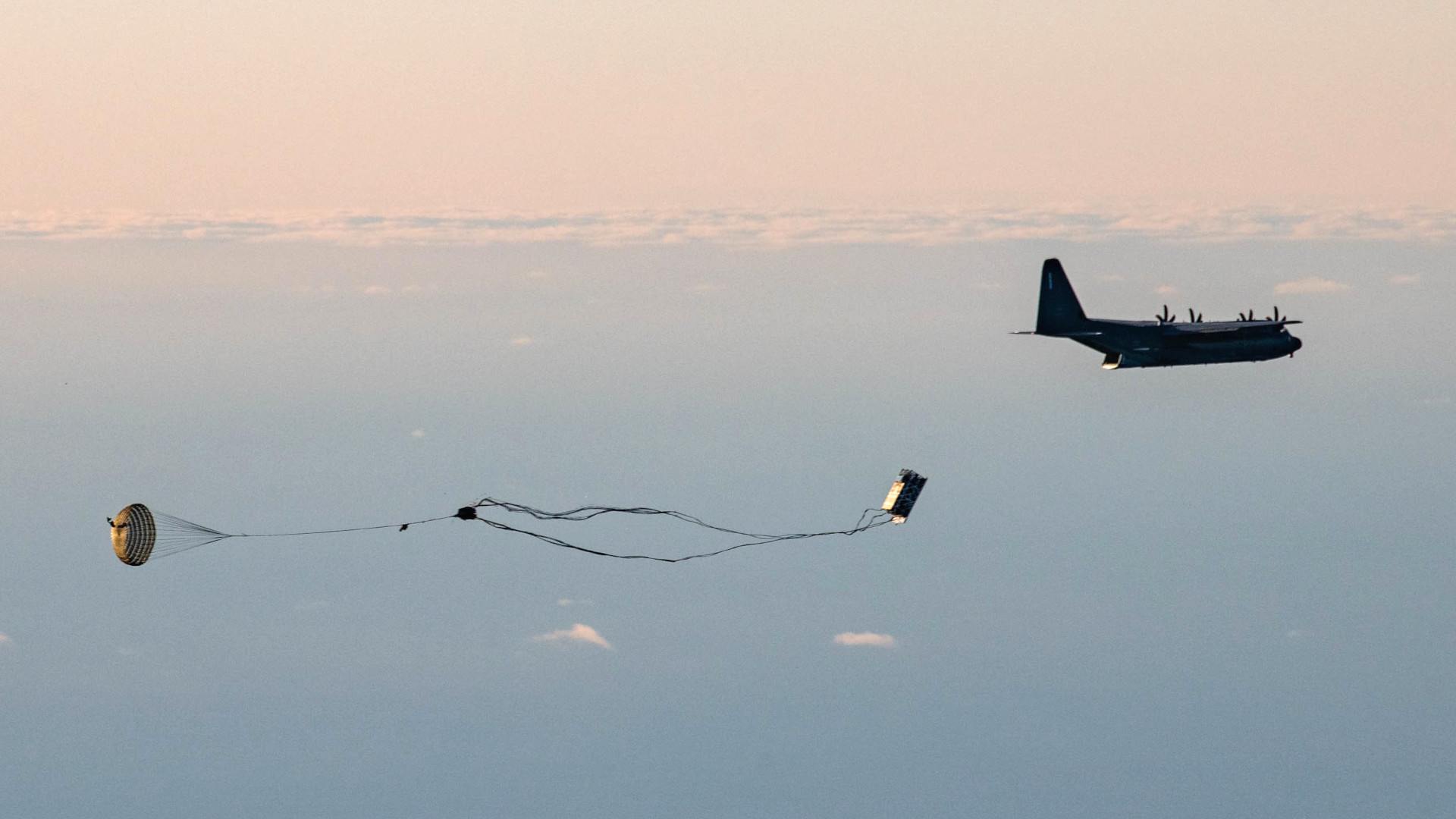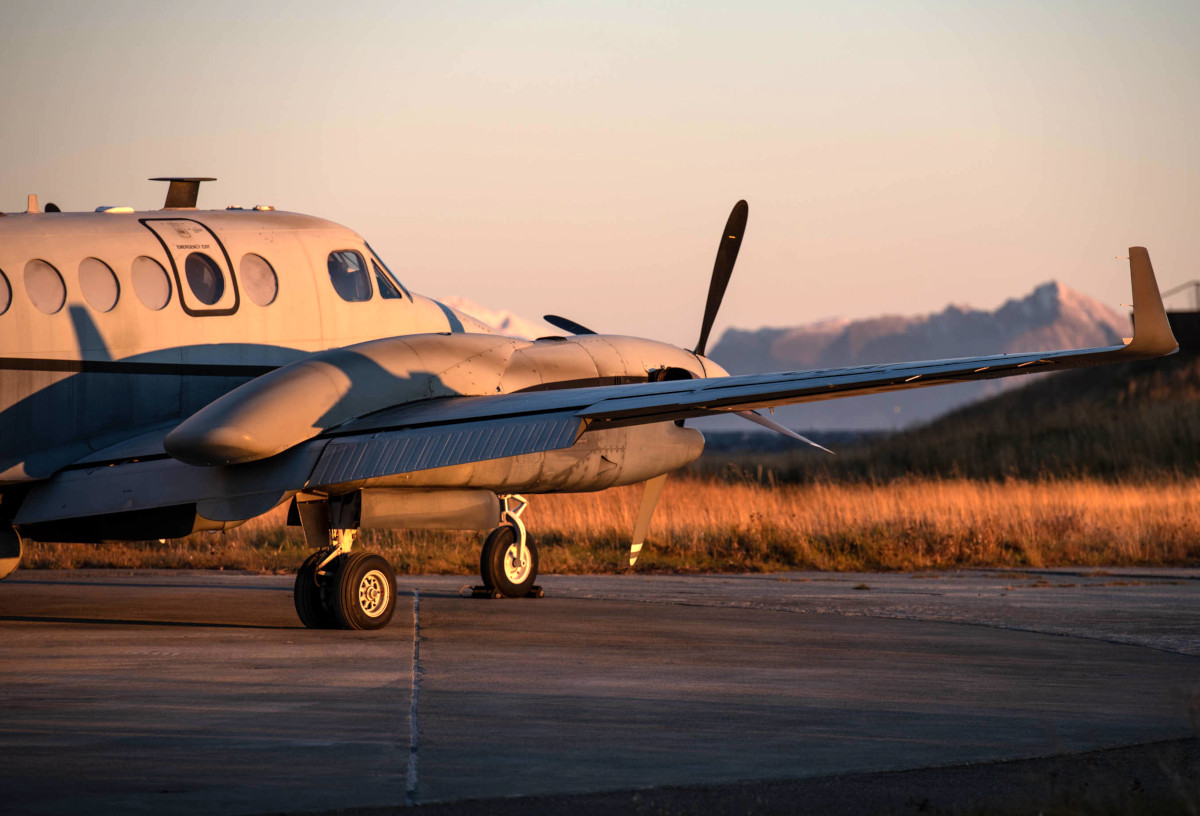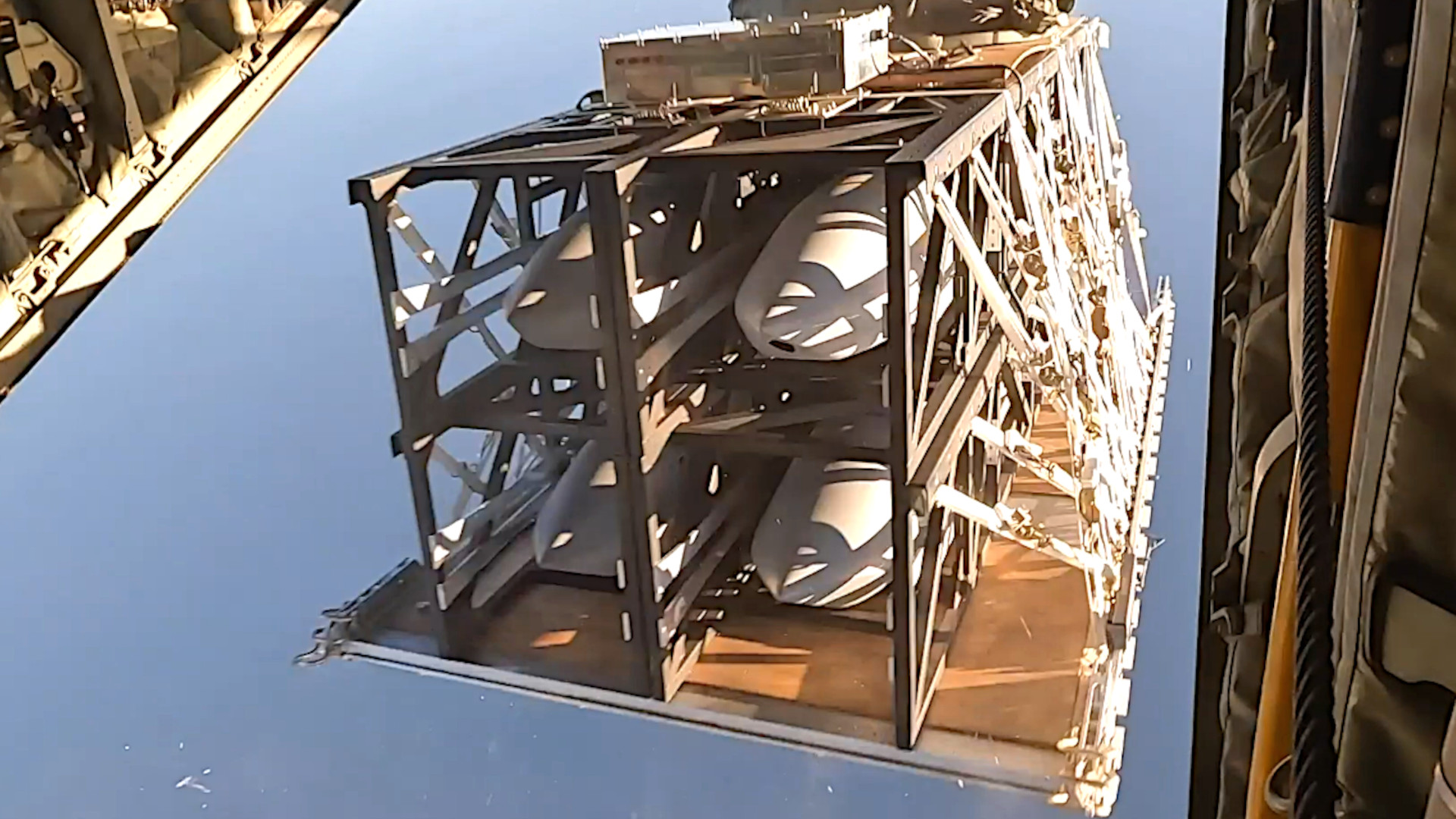A U.S. Air Force MC-130J Commando II special operations aircraft has launched an AGM-158B Joint Air-to-Surface Standoff Missile-Extended Range cruise missile, or JASSM-ER, above the Arctic Circle in the first-ever demonstration in Europe of the Rapid Dragon air-launched palletized munitions concept. In addition, U.S. personnel trained together with their Polish counterparts on the system highlighting how it might be employed by other members of a U.S.-led coalition in a future conflict, as well as potential foreign interest in this capability.
U.S. Special Operations Command Europe (SOCEUR) led the demonstration earlier today as part of the latest iteration of a larger multi-national exercise series called ATREUS. An MC-130J from the 352nd Special Operations Wing carried out the actual employment of the Rapid Dragon system over the Andoya Space Range, which is situated north of the Arctic Circle in the Norwegian Sea off the coast of Norway. The 352nd, based at RAF Mildenhall in the United Kingdom, forms the core of SOCEUR’s standing aerial capabilities and is the main Air Force Special Operations Command (AFSOC) unit in Europe, as you can read about more in this past War Zone feature.

An MC-12W Liberty intelligence, surveillance, and reconnaissance (ISR) aircraft from the Oklahoma Air National Guard participated in the demonstration, as well. Among other things, the MC-12W is equipped with a sensor turret containing electro-optical and infrared cameras that could have been useful for recording various aspects of the demonstration.

The Air Force Research Laboratory’s (AFRL) Strategic Development Planning and Experimentation (SDPE) office, which is in charge of the Rapid Dragon program, and other organizations supported the demonstration. The full list of participants includes U.S. Special Operations Command’s (SOCOM) Detachment 1, the Naval Surface Warfare Center-Dahlgren Division (NSWC-Dahlgren), Lockheed Martin’s Missiles and Fire Control division, Systima Technologies, ASR-Pioneer, and the Andoya Space Center, according to AFRL.
In addition to SDPE and SOCEUR, participants supporting this event included U.S. Special Operations Command (SOCOM) Det 1, Air Force Special Operations Command (AFSOC), the Naval Surface Warfare Center-Dahlgren; Lockheed Martin Missiles and Fire Control, Systima Technologies, ASR-Pioneer, and Andøya Space Center.
At the time of writing, there are limited specific details about what this particular demonstration entailed. A video the 352nd Special Operations Wing released, seen below, does show the release of the AGM-158B missile, presently the primary munition for use with the Rapid Dragon system, and the weapon then cruising along at a low altitude over the sea. The JASSM-ER is seen impacting the water at the end of its flight, but it’s unclear whether an actual target of some kind was struck.

The Rapid Dragon system consists primarily of multiple munitions contained inside modular frames, which are then loaded in a palletized fashion onto a cargo-carrying aircraft with a large rear ramp. It also includes a computerized targeting system that feeds information from off-board sources and into the missiles. The launch method involves releasing the palletized munitions via the aircraft’s ramp just like any other type of air-dropped cargo, after which the system deploys a number of parachutes, stabilizes itself, and dispenses the munitions vertically. The system is designed to be able to accommodate various types of munitions, as well as be scalable and able to be quickly integrated with various types of airlifters.
The computer-generated video below offers a good overview of the Rapid Dragon system and how it is designed to function.

Earlier, SOCEUR had posted another video on Twitter ahead of today’s demonstration that it said showed the MC-130J carrying the Rapid Dragon system taking off from an unspecified airfield. Another C-130-type aircraft is also seen in the clip takeoff and then trailing behind the Commando II.
Plane spotters using online flight tracking software spotted at least one MC-130J, as well as the MC-12W Liberty, taking off from Norway’s Andoya Airport, heading to the nearby Andoya Space Range, and then returning to the airport.
“The Rapid Dragon Experimentation Program is appropriately named, as it advanced rapidly from a concept on paper to a live fire using a developmental prototype in 24 months,” Dr. Dean Evans, the Rapid Dragon program manager, said in a statement. “Now less than three years from the program’s inception, Rapid Dragon is being used by SOCEUR in the Arctic Circle. This is a testament to the team’s focus on rapid fielding to meet warfighter needs.”
The first test of the Rapid Dragon system was conducted in January 2020 and a number of others have been carried out since then. These have involved various types of aircraft, including multiple C-130 variants and the C-17A Globemaster III, and different payloads, including AGM-158 series missiles and surrogates for them, as well as a novel design known as the Cargo Launch Expendable Air Vehicles with Extended Range, or CLEAVER.
The video below shows a previous Rapid Dragon test in July 2021.

“Although the Rapid Dragon Experimentation Program has been focused on kinetic munitions, the program’s efforts are now expanding from Palletized Munitions to Palletized Effects, which include kinetic and non-kinetic munitions; intelligence, surveillance, and reconnaissance, or ISR, platforms; cargo resupply; humanitarian aid delivery,” according to a press release from AFRL regarding the test off Norway’s coast.
The core idea behind Rapid Dragon is to offer a potentially more cost-effective and scalable way to rapidly and significantly increase stand-off strike capacity, as required, without the need to acquire and deploy more combat aircraft, especially bombers. This could be particularly important in a future high-end conflict. At the same time, airlift assets are likely to be equally in high demand during any future major fight, which has raised questions about the potential availability in those scenarios of cargo planes to turn into impromptu missile trucks. You can read more about the underlying concept here.
Today’s demonstration off the coast of Norway does underscore the Air Force remains very interested in the potential benefits that Rapid Dragon has to offer and is continuing to explore the concept.
This particular event also highlighted the growing strategic significance of the Arctic region, and the potential for conflict there, especially with Russia. As Arctic ice has receded, new economic opportunities, particularly expanded access to trade routes and natural resources, have emerged, as has increased geopolitical competition. The U.S. military, as a whole, has been actively working in recent years to better position itself to be able to conduct sustained major operations in the High North, including together with regional allies and partners like Norway.
This all, of course, also comes against the backdrop of Russia’s continuing war against Ukraine. This has already prompted the U.S. military and the rest of NATO, including Norway, to bolster its defensive posture along its eastern flank to help deter any potential spillover in Russian aggression.
“This is not signaling to Russia or any adversary,” U.S. Army Cpt. Margaret Collins, a SOCEUR spokesperson, had told The Barents Observer about the planned Rapid Dragon demonstration last week.
When it comes to allies and partners, Rapid Dragon’s participation in the ATREUS exercise has notably extended beyond today’s demonstration, too. Yesterday, U.S. personnel trained on the system with their Polish counterparts at Powidz Air Base. This included actually loading a Rapid Dragon pallet with what appeared to be AGM-158 surrogates onto one of the Polis Air Force’s C-130H Hercules airlifters.

Whether or not the Polish military has an active interest in acquiring the Rapid Dragon system itself, this training does highlight how American forces could potentially utilize allied or partner airlifters to employ it during a future contingency. The Polish Air Force is already an operator of AGM-158 series missiles, with the F-16C Viper fighter jet being its current launch platform for those weapons.
“This effort [ATREUS] is meant to increase integration of both conventional and Special Operations Forces from participating nations and enhance interoperability with our NATO allies and European partners,” Air Force Lt. Col. Lawrence Melnicoff, ATREUS exercise lead, said in a statement. “Routine engagements like those conducted throughout ATREUS training events enable effective responses for any contingency, as well as continuation of training, and increased readiness and collective defense.”
All told, the Rapid Dragon demonstration off the coast of Norway is yet another step forward for this system and its underlying concepts of operations. At the same time, this particular event also highlights new security dynamics in Europe and the Artic and how American forces could work with allies to respond to future crises in those regions.
Contact the author: joe@thedrive.com
